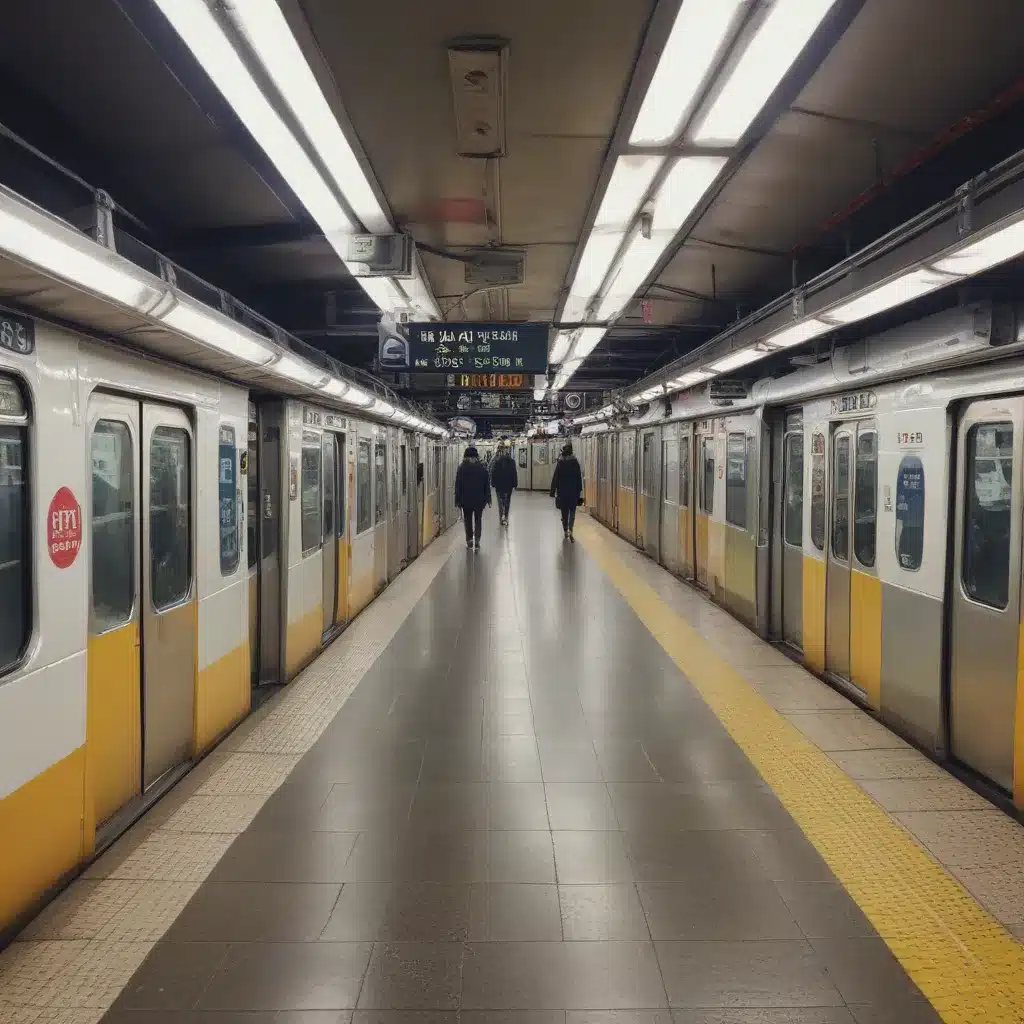
Conquering Seoul’s Subway System: A Foreigner’s Guide
As I stepped off the plane at Incheon International Airport, the hustle and bustle of Seoul immediately enveloped me. This city, renowned for its futuristic skyline and vibrant culture, was about to become my playground for the next few weeks. But before I could dive headfirst into the wonders of South Korea’s capital, I knew I had to tackle one crucial challenge: navigating the daunting Seoul Metro system.
Lonely Planet’s article had promised that the Seoul subway was “among the best in the world” – clean, punctual, and accessible. But as a newcomer, the prospect of navigating 22 lines and 302 stations seemed daunting. Luckily, I had a few tricks up my sleeve, courtesy of GlobetrotterKyle’s comprehensive guide on thriving in Korea as a foreigner.
Mastering the Metro: Apps and Cards for Seamless Travel
The first step to conquering the Seoul Metro was arming myself with the right tools. I quickly downloaded the KakaoMetro app, which became my trusted companion for planning routes and keeping track of train schedules. With its user-friendly interface and real-time updates, I could easily plot my journey from door to door, even when hopping between subway lines.
But a map and schedule were just the beginning. To truly blend in as a local, I needed a transport card. After a quick stop at the station kiosk, I had my very own SMARTER Card – a reusable, rechargeable pass that allowed me to tap in and out of the subway, buses, and even some retailers across the city. The convenience of not having to fumble for loose change every time I boarded a train was invaluable.
Navigating the Subway: Etiquette and Accessibility
As I descended into the depths of the Seoul Metro, I couldn’t help but be awed by the sheer efficiency of the system. Platforms were clearly marked with English signage, and announcements were made in multiple languages to guide travelers. But to truly fit in, I knew I had to observe the unwritten rules of subway etiquette.
I made sure to line up patiently outside the train doors, allowing others to disembark before I boarded. And when it came to seating, I always kept an eye out for the reserved spots, dutifully leaving them open for the elderly, pregnant, and those with disabilities. Lonely Planet’s guide had warned me about this subtle but important nuance of Seoul subway culture, and I was determined to respect it.
Accessibility, it turns out, is a top priority for the Seoul Metro. With elevators, Braille tiles, and wheelchair-friendly turnstiles in nearly every station, I felt confident navigating the system, even with limited mobility. The Lonely Planet article had also highlighted the existence of Seoul Danurim, an organization dedicated to providing accessible travel resources, should I ever need additional assistance.
Expanding My Horizons: Buses, Taxis, and Bicycles
While the subway was undoubtedly the backbone of my Seoul transportation, I soon discovered that the city offered a diverse array of alternative options to explore. Eager to venture beyond the typical tourist haunts, I decided to venture out on the buses.
Thanks to GlobetrotterKyle’s guidance, I quickly learned to navigate the color-coded bus system, which catered to everything from cross-town commutes to specialized tourist routes. The real-time arrival information and digital crowding indicators on the bus stop signage proved invaluable, allowing me to plan my trips with precision.
Of course, no visit to Seoul would be complete without trying out the city’s taxi services. Armed with the Kakao T app, I was able to summon rides with the ease of a local, even in the most remote corners of the city. And for those times when I wanted to explore under my own power, the Ttareungi bike-sharing scheme provided the perfect two-wheeled solution, letting me navigate the city’s cycling trails and pedestrian zones with the wind in my hair.
Embracing the Adventure: Lessons Learned
As I reflect on my time navigating Seoul’s intricate transportation network, I’m struck by how much I’ve learned. What once seemed like a daunting maze of subway lines and bus routes has now become a familiar, almost intimate, part of my Seoul experience.
The Hotel Stay Inn Seoul may have been my home base, but it was the city’s public transportation system that truly allowed me to explore and immerse myself in the vibrant culture. From the polite etiquette of the subway to the colorful buses that whisked me through bustling neighborhoods, every journey became an adventure.
And while the apps and cards I discovered were undoubtedly game-changers, it was my willingness to step out of my comfort zone and embrace the unexpected that truly transformed my Seoul experience. Whether it was hopping on a last-minute bus to a hidden temple or taking a leisurely cycle along the Han River, each new mode of transportation opened up a world of possibility.
So, if you find yourself in Seoul, ready to conquer the city’s transportation system, remember: arm yourself with the right tools, observe the local customs, and most importantly, be prepared to explore. For it is in those unexpected moments, when you step off the beaten path, that you’ll truly discover the magic of navigating Seoul like a local.

